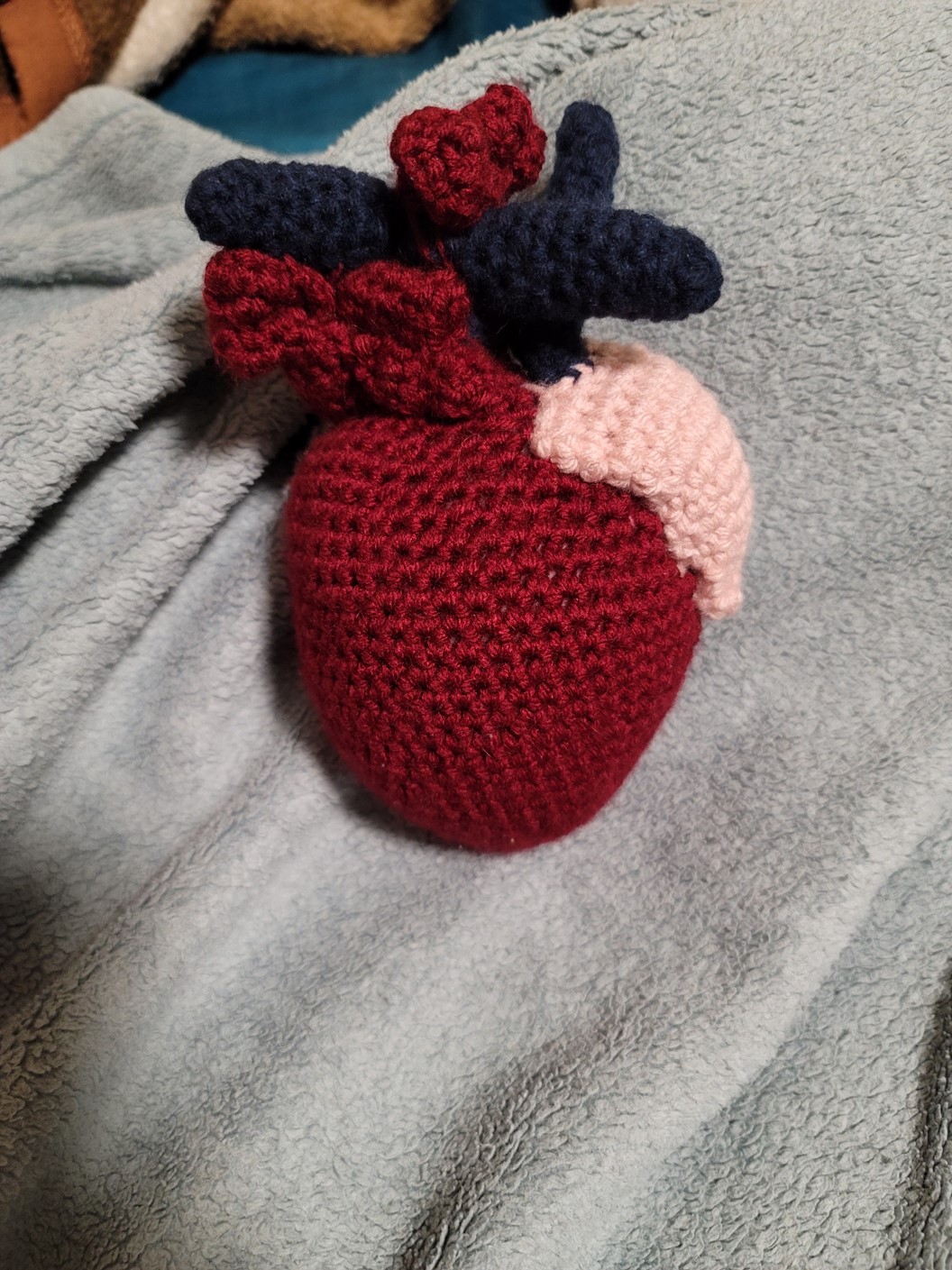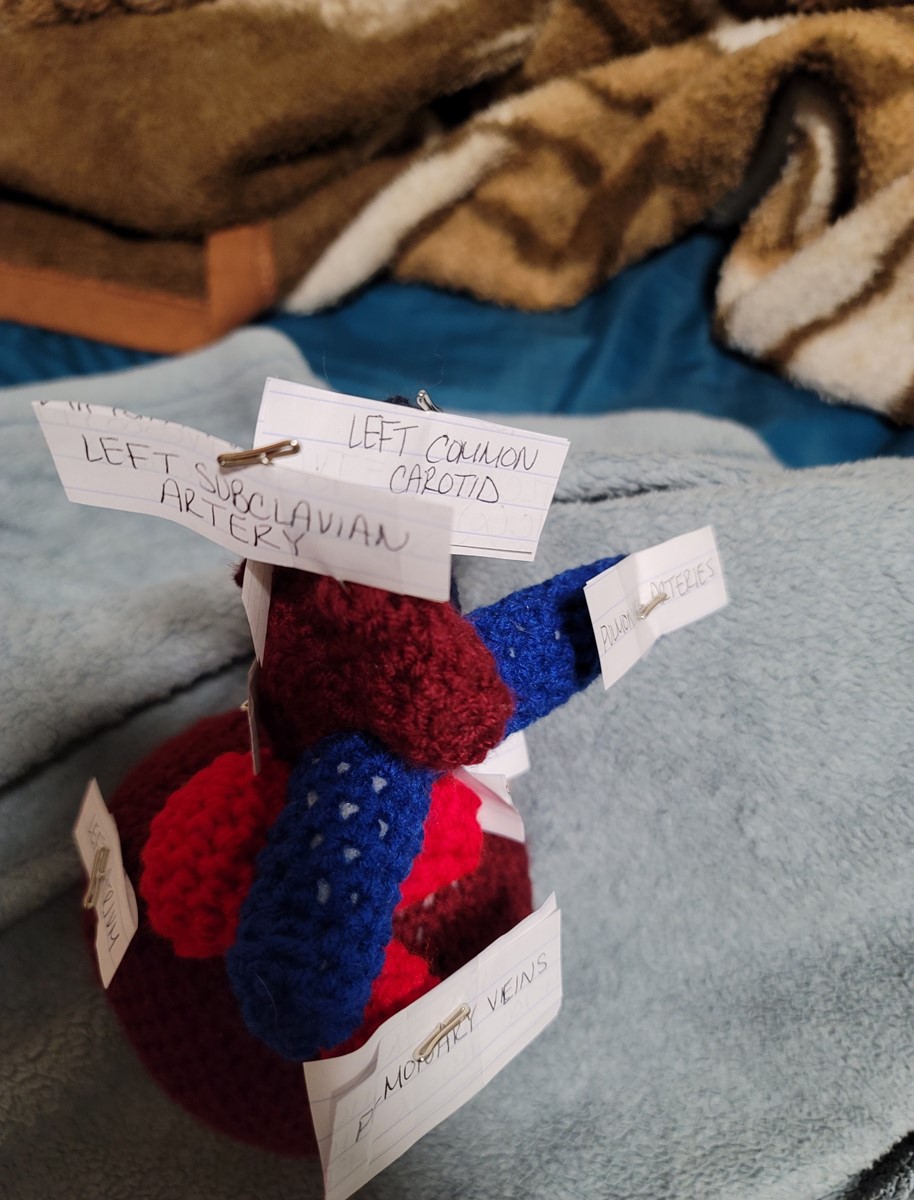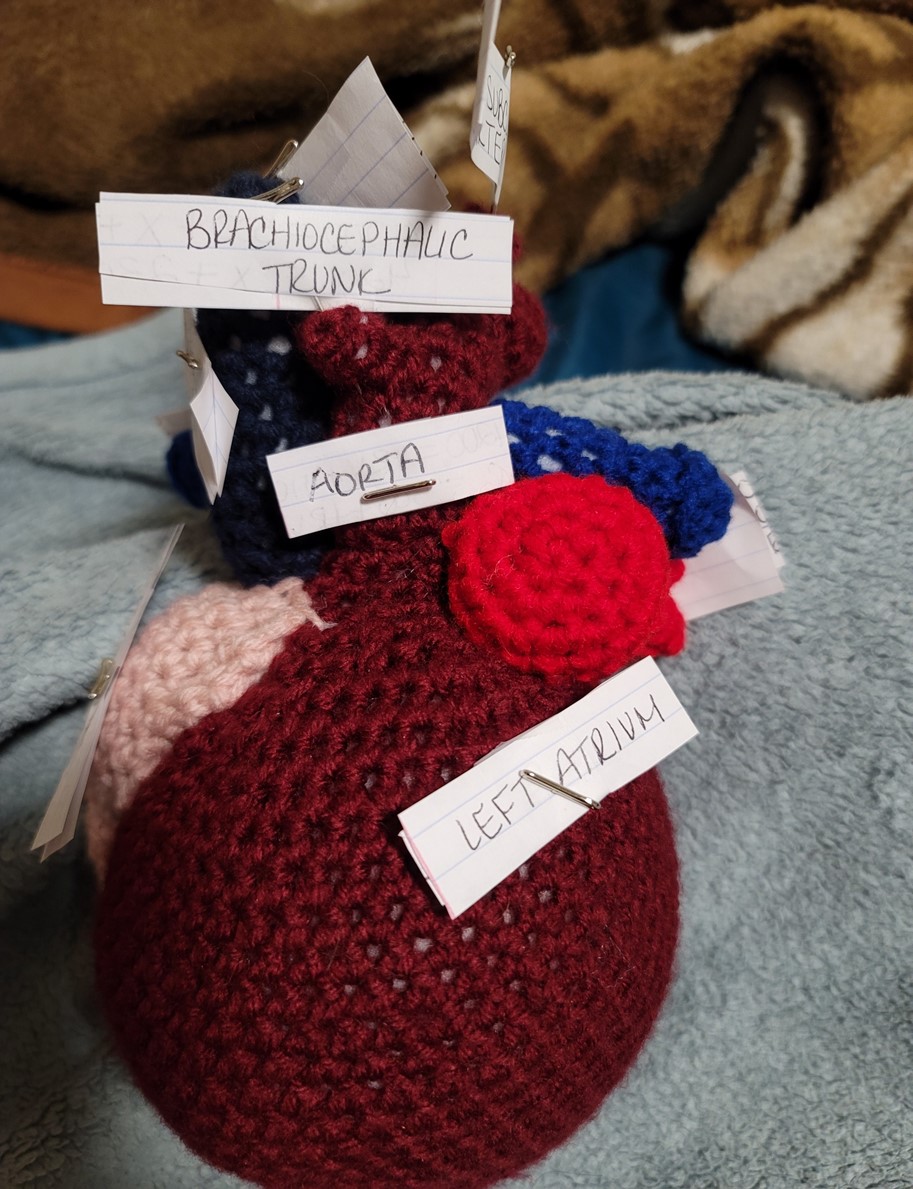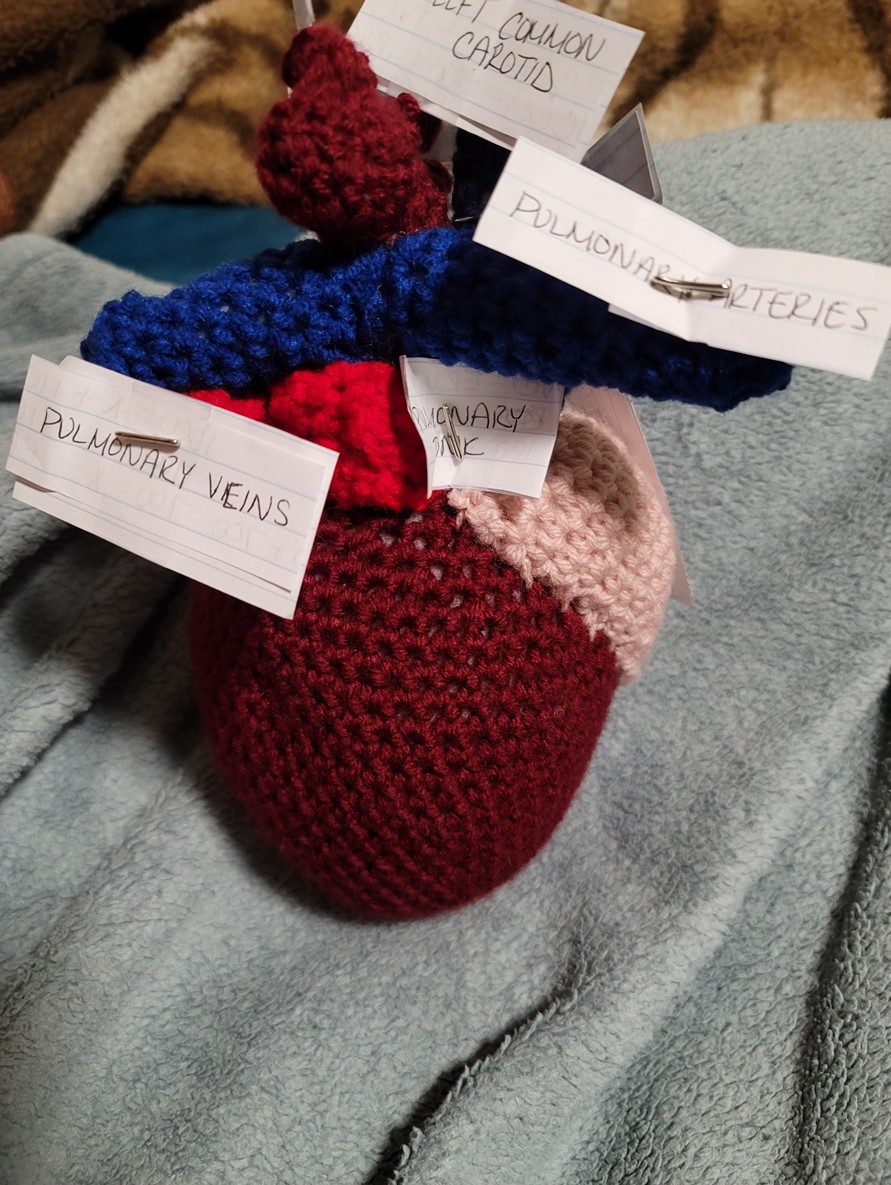For the art portion of my project, I did a 3D model of the heart in crochet. The two pictures on the top is a normal size heart and the four on the bottom with push pins indicating structures of the heart is an enlarged heart. I also placed tabs on all of the structures of the heart: Right and Left Atrium, Aorta, Superior Vena Cava, Brachiocephalic trunk, Left subclavian artery, Left Common carotid, Pulmonary veins, Pulmonary arteries, and Pulmonary Trunk. I wanted to show how much larger an enlarged heart (also called Cardiomegaly) looks like. A normal size healthy heart is about the size of your fist ranging from 1.6 inches in women and 1.8 inches in men, while an enlarged heart averages above 2 inches. Cardiomegaly causes the muscles of the heart to weaken and the ventricles to stretch (dilate) to the point that the heart has difficulty pumping blood throughout the body.







That is amazing! Who would have ever thought of depicting our heart with yarn! Great job!
Ashley Reeves did her project on cardiomegaly. Cardiomegaly is a heart condition characterized by an enlargement of the heart. It is more likely to be a symptom of another condition than a condition all by itself. The average size for a healthy heart from the left ventricle is about 1.8 inches in men and 1.6 inches in women. An average heart that has cardiomegaly is larger than 2 inches. Cardiomegaly usually involves the enlargement of one or both ventricles or the atria. This condition makes it harder for the heart to pump blood, which can lead to symptoms like shortness of breath, fainting, fatigue, arrhythmia, and edema.
There are many things that can cause cardiomegaly. These include dilated cardiomyopathy and hypertrophic cardiomyopathy. Dilated cardiomyopathy is characterized by thinly stretched walls of the right and left ventricles. Hypertrophic cardiomyopathy is characterized by an abnormally thick left ventricle. Some other causes of cardiomegaly are infection, including HIV, thyroid disorder, severe anemia, myocardial infarction, COPD, abnormal heart valves, and pulmonary embolisms. Treatment usually involves treating the underlying condition. These treatments could be surgery, medications, or other medical procedures.